Full Android on Windows Mobile devices
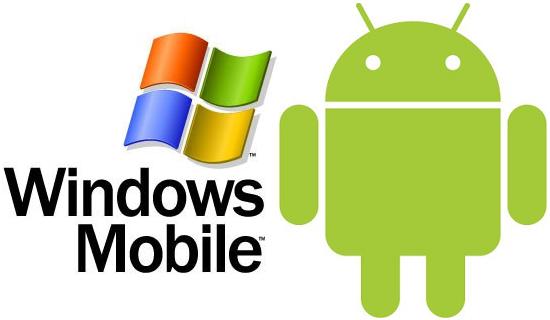
Introduction
Good day. Without stretching the introduction, I will get straight to the point. So, Android on Windows Mobile.
Even in the recent past, the fact of using a device originally designed to work with Windows Mobile OS, running Android OS, caused associations with glitches, instabilities and a complete inability to use the device except for “to see what was there”.
But time passes, and the development of the Android platform is running ahead by leaps and bounds. More and more supporters of Windows Mobile want to try and “touch” Android on their device. It pleases doubly that among them are those who are ready to take on the difficult task of porting Android to their favorite communicators with WM.
So, everyone who is interested in the opportunity to see what modern Android assemblies on WM communicators are capable of, I ask under the cat
At the moment, Android is most common on HTC's communicators, which in principle does not cause much surprise, since everyone knows that they are the ones who release most of the communicators for Google on Android. In this regard, porting Android to their own, HTC, Windows Mobile communicators, is less painful and faster than communicators from other manufacturers.
Go
As an example, the article will be based on personal experience of using the Android OS on the HTC Touch Cruise communicator, aka Polaris, aka P3650.
First, a little theory about what Android is on the communicator with WM:
The main components of the firmware:
- Initrd.gz - a temporary file system used by the kernel when booting the OS (only when starting from WM from a memory card)
- Haret.exe - file that provides the launch of the Android OS (only when running from a WM from a memory card)
- Zimage - the actual assembled Android kernel (only when running from a WM from a memory card)
- Default.txt - boot script to start Android (only when starting from under WM from a memory card)
- androidinstall.tar - Android OS Files
- It is also possible file androidupdate.tar - a file that contains any updates or components of the Android OS.
- Running Android OS from a communicator's memory card from under WM
- Android OS firmware in memory of the communicator
')
Running Android OS from a communicator's memory card from under WM
In this case, the entire set of files from the list above is located in any folder in the root of the memory card (for example, Memory Card \ android). At the same time, one of the main conditions for successful launch of Android is the presence of a well-formed default.txt. The fact is that it is in this text file that they are explicitly spelled out (moreover, there is a comment for each option, what it is) all the settings necessary for Haret.exe to successfully launch the Android OS.
I give an example of the default.txt file:
#alloctest 0x2000
set RAMSIZE 0x08000000
set MTYPE 1723
set KERNEL zImage
set initrd initrd.gz
#
# The following kernel parameters are useful
# ppp.nostart - Set ppp.nostart = 1 to disable it
# msm_sdcc.msmsdcc_fmax - The maximum frequency (in Hz) used by the SD controller
# pm.sleep_mode - The mode used when the phone is off
# 0 = Power Collapse Suspend, 1 = Power Collapse, 2 = Apps Sleep,
# 3 = Slow Clock and Wait for Interrupt 4 = Wait for Interrupt
# Default is 1, use 1 for best power savings
# board-htcpolaris.panel_type - Panel type
# 0 = Don't power off the panel (Default)
# 1 = Sony 2 = Topoly 3 = Topoly (probably just the same as 2)
# lcd.density - Defaults to 160, 128 shows more on screen
#
set cmdline "ppp.nostart = 0 pm.sleep_mode = 1 mddi.width = 240 mddi.height = 320 no_console_suspend clock-7x00.mddi = 0xa51"
boot
In fact, when Haret.exe is launched, the phone is rebooted to another OS — while Android tries to use the parameters that the user specified in default.txt. That is, Android, though it runs from under WM, you can restore WM back only by Soft Reset. Android retains its full functionality when running from a memory card from under WM. Negative moments are associated with the speed of the device as a whole and with stability: involuntary crashes and reboots are possible.
As a result, this method can be recommended first of all to those who have long wanted to try Android, but did not know how to approach it: minimal efforts are required, and as a result you can fully familiarize yourself with the capabilities and beauty of the OS.
Android OS firmware in memory of the communicator
This method involves a bit more preparation. We will need:
• .nbh file - the file being flashed to the communicator contains all the information on updating the firmware. Usually for Android it has the name polaimg-panel1-320-17-06-10 .nbh, where:
- polaimg - destination for a certain type of communicator (Polaris)
- panel1 - matching a specific model of the communicator in the case of several models (in the case of HTC Polaris - pane1 is Touch Cruise, and for example panel3 - Touch Cruise 2 aka Iolite),
- 320 - screen resolution. The fact is that there are versions of firmware with a resolution of 480, but this, in the case of firmware, will lead to a small picture on the screen
- 17-06-10 - the release date of the corresponding file. Of course, the newer the file, the more errors are fixed in it with respect to previous versions and the better and more stable the communicator will work with it.
• Computer, USB cable, previously unlocked communicator, a utility for HTC communicator firmware, which is called Custom ROM Update Utility or Custom RUU, and for each model of the communicator it has its own
• FAT32 formatted flash drive, andboot folder created on the flash drive and the androidinstall.tar file placed in this folder and if there is / you need the androidupdate.tar file. All flash drive is ready, it can now be set aside and complete the necessary operations with the communicator
• Put the communicator in the boot mode, for Polaris it is holding the photograph button and turning on the communicator while holding the photograph button, for other devices there are different methods of introducing it into boot mode. If everything went well, you will see a three-color screen with Serial on the bottom (on HTC communicators)
Procedure:
• We connect the communicator to the PC, the inscription Serial should change to USB (on HTC communicators). Only after that continue further actions.
• On the PC, create any folder and put the Custom RUU and the selected .nbh file there. Launch Custom RUU, follow the instructions on the screen, simultaneously placing checkboxes of the agreement and confirmation of everything, click Update on the last screen and wait for the process to go on both the PC screen and the communicator screen. Progress bar reaches 100%, Custom RUU says that everything is ready, the phone restarts. Since this file does not contain real firmware, like WM firmware, the phone does not load anything, it only hangs on the first screen. Everything is fine, the process of installing Android is still ahead
• We insert our prepared memory card into the communicator and make a soft reset. If you select the correct .nbh file, then after a few seconds the phone will blink on the screen and the Tux Penguin will appear on the screen and white text will run across the black screen. Important! At this stage, do not miss the moment when the words “Hold down the Volume Up or Up to the installer” appear on the screen - press and hold either the volume + or the center of the joystick and get into the Android’s Install menu
• Here, by moving the menu with the joystick and making a choice using the central button, you can select the location of the Android firmware files, as well as proceed with the installation. So, choose Sys on NAND, Data on NAND, go down below and select Install System,
• after the system returns to the same menu, if there is androidupdate.tar, select the Install Update item, wait for the return to the menu and select Fix Permissions
• after returning to the menu, we make a soft reset, if you just make a quit, then the phone will be out of order
• We are waiting for successful downloading of the communicator. The first time it may take 5-15 minutes, depending on the selected firmware.
• Enjoy Android :)
Briefly about the firmware and functionality:
Currently, the main firmware is based on either 1.6 Donut or 2.1 Éclair.
Donut is a more stable and functional version, since all possibilities have been tested there for a long time. Éclair firmware for WM communicators appeared relatively recently and is still a bit damp, and it’s all about functionality, not stability. For example, the issue of a non-working camera has not yet been resolved and, depending on the phone, there are problems with Bluetooth headsets, which does not affect the speed and stability of the communicator as a whole.
Positive points:
Beautiful, unusual (especially after WM), very functional, a fully working Market !, the device’s responsiveness improves many times compared to WM, even on fairly weak devices (most of the firmware have Rogue Tools built in, which allows you to overclock the old Polaris up to 600MHz!), full synchronization with Google and with all its services in addition, the ability to customize all the smallest details of the communicator for yourself, Russian out of the box (in Éclair 2.1), etc.It seems to me that everyone who ever tried the communicator on WM, no matter what version, be it 5.0, 6.0, 6.1 or 6.5, defined their impressions of the shell as a whole, and so Android just as an interface through which you perform most of the daily activities at times more convenient and more functional. This applies to everything - reading mail, calls, SMS, viewing a photo gallery (it’s 3D on 2.1 Éclair!), Music, installing and deleting programs, monitoring the status of the device ... you can continue the list for a very long time and all this without WM brakes after each button press or touch the screen.
I would like to say a few words about the Market. He is and he is huge. Almost everything a user needs for any user level is available for free, more than 90% work immediately and without restrictions on the hardware. There are games too, from simple card games to almost 3D level. All that is required of the user is to go there, select, click install, the application itself will load and install on the phone. Everything! You can go to the menu and run. And if suddenly any application has been updated to the new version, Android will notify you about this and will offer to download the update. As a former WM user, I can say this is very different from the process of finding and installing applications on WM, followed by checking for new versions and the need to search for a new version by yourself downloading and installing again.
In general, I think that the following screenshots will show more than I tell you in words:
Home Screen: | Switch between desktops: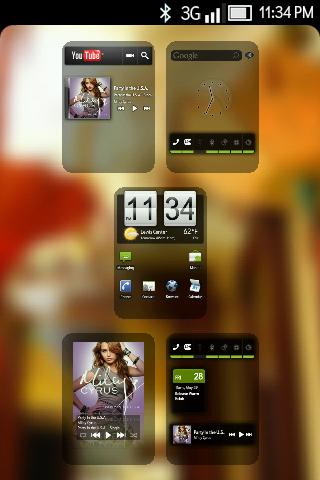 |
Main menu: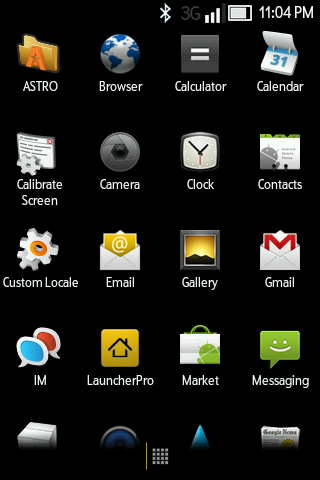 | Photo gallery 3D: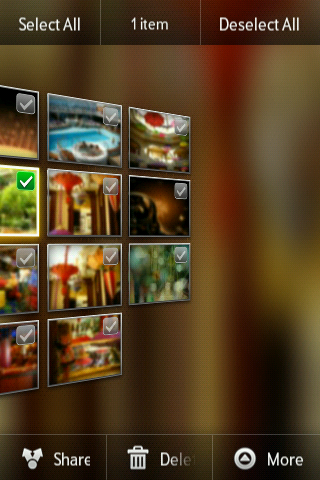 |
Lock screen: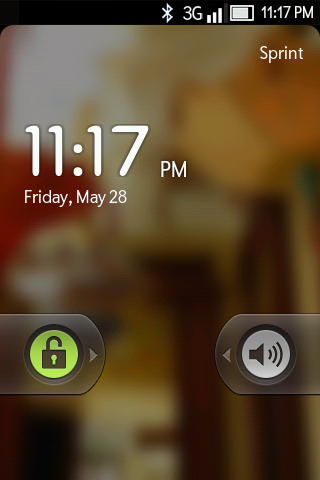 | Selection of desktop widgets: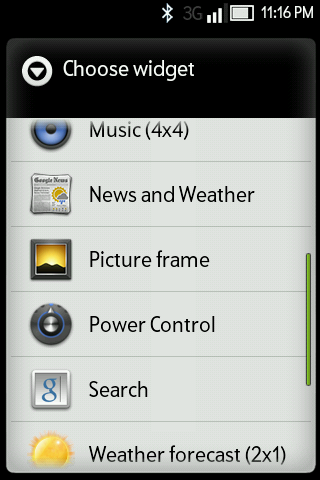 |
PS I give a list of some devices and the development status of the Android OS on them:
• HTC Kaiser (TyTN II) - there is a working version of the firmware
• HTC Touch - there is a working firmware version.
• HTC Diamond is in development.
• HTC Touch Diamond 2 - there is a working firmware version
• HTC HD - there is a working firmware version.
• HTC HD 2 is in development.
• HTC Touch Pro - there is a working version of the firmware
• HTC Touch Pro 2 - there is a working firmware version
• HTC Touch Cruise - there is a working firmware version
• HTC Touch Cruise 2 - there is a working version of the firmware
• Sony Ericsson XPERIA X1 - there is a working version of the firmware
PPS forum.xda-developers.com/index.php
Source: https://habr.com/ru/post/97601/
All Articles